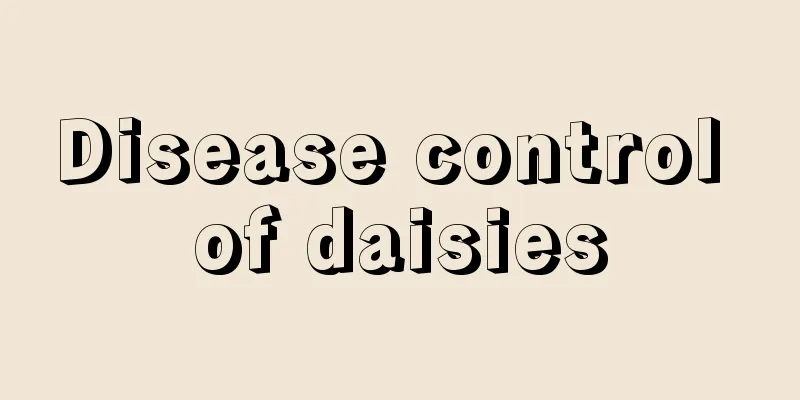Disease control of daisies

Daisy leaf blightLeaf blight mostly infects the leaf margins and tips. The lesions are irregular in shape, ranging from small to large, and are reddish-brown to gray-brown. The lesions are connected into large dead spots, and the dry area reaches 1/3-1/2 of the leaf. There is a darker band on the edge of the lesions; the boundary between the diseased and healthy spots is obvious. In the later stage, some small black spots appear on the lesions. Specific symptoms: The diseased leaves turn yellow at first, and then the yellow part gradually turns brown and necrotizes. The disease spreads from local areas to the entire leaf veins, presenting brown to reddish-brown leaf edge spots with wavy edges and darker color. The boundary between the lesion and the leaf is obvious, and sometimes there is a light yellow band of varying width on the outer edge. Subsequently, the lesion gradually extends to the base of the leaf until the entire leaf turns brown to gray-brown. Then black fuzzy substances or small black spots appear on the back or front of the diseased leaves. Daisy seedling damping-off diseaseThe disease can occur in seedlings before they emerge from the soil or after they emerge. The disease occurs before emergence from the soil, and the embryonic stem and cotyledons rot. The disease occurs in seedlings after emergence from the soil, with water-soaked spots initially appearing at the base of the young stems, which then turn brown and shrink into a linear shape. The seedlings fall to the ground and die, and the cotyledons have not yet withered and are still green. When the temperature is high and the humidity is high, a layer of white cotton-like mycelium may grow on the surface soil near the diseased plants. Botrytis cinereaThe seedlings infected with gray mold are light in color, and the leaves and petioles are grayish white and water-soaked. The tissues soften and rot, and gray mold grows on the surface when the humidity is high. Young stems often initially develop irregular water-soaked spots at the base of the petiole, which quickly become soft and rotten, and then shrink or break. Finally, the diseased seedlings rot, wither and die. Daisy brown spotFungal disease, the lower leaves begin to become infected and gradually spread upward. The spots are round or oval in the early stage, purple-brown, and black in the later stage. The diameter is 5-10mm with clear boundaries. In severe cases, the spots can be connected into pieces, causing the leaves to turn yellow and fall off, affecting flowering. Daisy AnthracnoseThe disease infects the leaves of daisies. In the early stage of the disease, small chlorotic spots appear on the leaves, which gradually expand to form circular, semicircular or elliptical spots. The lesions are light brown to grayish white with reddish brown rings around the edges. Under humid conditions, pale pink myxospore disks appear on the lesions. Anthracnose occurs from April to June. The pathogen overwinters in diseased fallen leaves in the form of conidia and is spread by wind and rain. Daisy disease prevention and control methodsPrevention should be the main focus of control. Targeted drugs should be sprayed with new lipid films to increase the effective ingredient rate of pesticides. They will not be afraid of evaporation due to sun exposure, can regulate water absorption, and prevent drought and rain. Avoid dense planting during cultivation, and try to maintain a cool environment with good ventilation, air permeability and sufficient light, otherwise the plants will become thin and leggy. Keep it clean and remove and clean any infected plants or leaves. When the disease occurs, take chemical control measures immediately. |
<<: Common diseases and prevention methods of Monstera
>>: Pests and diseases of golden diamond and their control methods
Recommend
How to plant pine red plum seeds
Time of choice For this method, it is generally c...
How to grow Kalanchoe in winter?
Kalanchoe is a beautiful and easy-to-grow succule...
When is the best time to sow flower seeds?
Nowadays, people like to grow flowers and plants ...
When I got home after being away for 3 days, all the succulents were damaged, and it turned out that they were the culprit!
Succulents are destroyed by outdoor cultivation F...
Is it good to keep jasmine at home?
1. Is Feng Shui good? It is very good feng shui t...
How to grow Daphne koreana in autumn
1. Autumn maintenance is very important Autumn is...
When is the best time to harvest Chinese cabbage (When is the latest time to harvest Chinese cabbage in autumn)
Chinese cabbage is a common vegetable in our dail...
Why can't the Christmas cactus I bought online survive? (Is the Christmas cactus I bought online easy to survive?)
Christmas cactus has bright flowers, cute leaves ...
How to grow Lithops until it fills the pot?
Lithops , also known as stone flower, is a small ...
How and when to plant peppers
Time and month for planting peppers Bell peppers ...
Snapdragon cultivation methods and precautions
1. Lighting Snapdragons like to stay in a sunny e...
How long does it take for a jade pendant to be used?
Jade Pendant Service Time After the jade pendant ...
Rose cutting time and method
Rose cutting time Roses prefer a warm environment...
How to plant carnation seeds and when to plant them Seedling raising method (key points)
Carnation seeds are suitable for planting Carnati...
Rose cutting method and time
1. Cutting time Its cuttings are mainly carried o...









